#racism in New England
Explore tagged Tumblr posts
Text
supporting communities & people impacted by the Southport attack and the far-right riots in the UK
here is a list of community fundraisers I found, starting with those aiming to support the Southport community after the appalling attack at a children dance party, to the fundraisers helping those affected by the subsequent racist and Islamophobic far-right/nazi riots
Edited on 5 August to include Middlesbrough fundraisers. Edited on 6 August to correct the link on the Books for Spellow Lane fundraiser, to adjust the name change for the Belfast fundraiser, and to adjust the wording in the second last paragraph.
Southport:
Southport Strong Together Appeal - organised by the community foundation for Merseyside, for those affected by the Southport knife attack
United for Southport families - the funds will be distributed among the nine families of the children who were at the party
Swifties for Southport - a fundraiser for the Alder Hey Children's charity, which supports the victims and the affected families, as well as first responders and clinicians. Extra funds will also support the wider Southport community
Fundraiser for the Southport Mosque - a fundraiser to aid rebuilding or possibly re-locating the Southport Mosque after the damages it suffered during the riots
Rebuilding Windsor Mini Mart - fundraiser to rebuild the locally-owned grocery store that was targeted during the attacks, broken into, and looted
Liverpool:
Fundraiser for the Spellow Hub - the Spellow Hub was broken into, looted and set on fire at night during the riots. The Spellow Hub is a newly created one-of-a-kind (in the UK) institution, which consists of a library as well as a community centre with a mission to help people get education and pathways to work
Books for Spellow Lane - another fundraiser for the library in the Spellow Hub, to replace the books and rebuild the library there edit: included the correct link
Hartlepool:
Fundraiser for the Nasir Mosque - the Nasir Mosque was attacked following Southport riots; this fundraiser is organised by Hartlepool citizens to help the mosque deal with the damages as well as to show appreciation for the role of the mosque in the community. edit: the funds will be also distributed to the local community!
Rebuilding the Farm Shop - the shop was targeted during the riots, and when the owner and his son tried to protect it, they were also violently attacked. The fundraiser is to help fix the damages to the store.
Sunderland:
help rebuild Citizens Advice Sunderland offices after arson - two of the Citizens Advice Sunderland offices were set on fire during the riots, and one of them is completely destroyed.
Hull:
Hull Help for Refugees - a local fundraiser to support the Hull Help for Refugees charity, the donated money will be re-distributed to community members affected by the riots
Fundraiser for Hull Help for Refugees and Welcome House in Hull - collected money will be donated to the two charities
Belfast:
help fix racially motivated damages - originally the fundraiser for the Sahara Shisha Cafe which was targeted by the far right in Belfast during the riots, now a fundraiser for all affected businesses in the area. edited to reflect the change of the name of the fundraiser to avoid any confusion
Middlesbrough:
Supporting residents after the riots - Middlesbrough has suffered so much during the riots, lots of businesses as well as just regular family homes were vandalised, had their windows smashed or even were broken into. This fundraiser wants to distribute the funds between affected people to help them fix the damages, and to generally support the local community. the newest fundraiser, imo potentially the most urgent one
Fundraiser for a Care worker's car which was set on fire - a car belonging to an employee of a care agency was set on fire during the riots while he was on shift at a care home.
If you want to donate locally but there is no fundraiser to support where you live, consider donating to your local charities oriented towards Muslim or PoC communities, or towards anti-racist and refugee organizations! And go support your local Muslim/Arab/Black/Asian/Refugee owned businesses!
If you have any information about other local fundraisers, feel free to add to the post or don't hesitate to let me know and I will add them here! We have seen so much hate in the past few days, we have to stay strong and keep supporting each other!
Stay safe everyone 💛
#uk riots community fundraising#there is a lot more fundraisers for Southport but these are the major ones#it's difficult to find more local riot damages fundraisers however because those tend to be shared locally only and it hasn't been long#since the riots so i assume more will be created in the next few days#so if you know about any and want to add them here please feel free to drop me a link! It'd be good to have them in one place#tumblr has a decently sized uk community so if this post finds at least one person who learns about a local fundraiser i'd be happy#not that you have to donate locally of course. i encourage eveyrone to donate. you dont even have to be british!#southport#uk#uk riots#england#uk far right#far right extremism#uk news#uk politics#ukpol#racism#islamophobia#nationalism#fundraisers#octarine talks#there are other ways you can support your community through all this and i highly encourage that. i thought about writing about that here#but ultimately this is a fundraiser post and you know your community best - just go talk to people and give your support#or help clean up#or attend the antifacist marches and demos and vigils
6K notes
·
View notes
Text
04.07.2024 To all people of colour and Muslims in the UK, please be careful when you go out.
I'm sure you've heard about the tragedy in Southport and how it has given the far right in this country even more fuel for their rhetoric.
If not I suggest you look it up to know what's going on.
But long story short on July 31st 2024, 3 children were killed at an event in Southport. And there's been a lot of misinformation surrounding the suspect.
Particularly that the suspect was a Muslim immigrant and that their identity was hidden for some conspiracy.
These claims have been proven false. (And the suspects identity was hidden because they are 17 and can't be identified by reporters unless a judge rules they can. Which has now been ruled. )
But the fire has long since been lit. There's riots and protesters going on across the country from far right groups like the EDL (English Defence League.)
There is hope in the solidarity many are showing. As well as the police and the government trying to contain these protests crack down on them.
But just be mindful. There's posts online about when and where certain protests are happening. Please if you can avoid these areas at those times.
They have been attacking people of colour, attacking Muslims and police. They are vile and cruel people and I hope they never cross any of your paths.
Stay informed but don't let yourself consume only this hateful content.
You are not alone. So many people are standing here with us and I know it's hard too see that. You belong here, don't let anyone tell you otherwise.
Stay safe.
40 notes
·
View notes
Text

.

.

#free palestine#free gaza#racism#current events#news#England#uk#Israel#anti israel#Zionism#genocide#occupation
73 notes
·
View notes
Text
#tiktok#uk politics#uk news#uk#united kingdom#great britain#britain#british#gb#gb news#uk riots#riots#england#racism#south port riots#southport#southport riot#Muslim refugee#muslim#islamophobia#islamic#islam#tw death mention#death mention tw#death ment tw#knife attack#Muslim mosque#mosque#elon musk#twitter
6 notes
·
View notes
Text
see what I want is to open a beloved diner in a small but charming new england town but unfortunately I don't think that would be a reliable enough source of income in this day and age
#post posting#im watching gilmore girls can you tell#anyway how does it feel to live MY dream#yes im aware i already live in a small town in new england#HOWEVER#all we have here are millenials and old people who complain a lot on the forum but never actually do anything important#and racism disguised as school spirit#everything that made it remotely charming has been knocked down in favor of strip malls#its DEVASTATING truly#i just want to live in a television show set in the year 2000 is that too much to ask
3 notes
·
View notes
Text
Alicia Sadowski at MMFA:
On January 17, the New England Patriots introduced Jerod Mayo as the organization’s new head coach, the first Black head coach in the history of the franchise. After Patriots owner and Trump ally Robert Kraft claimed he was “colorblind” at the introductory press conference, Mayo discussed the significance of his promotion and the importance of acknowledging diversity. In response to Mayo’s comments, right-wing media retaliated by questioning Mayo’s ability to lead the team and decrying the Patriots’ future as a “woke” football team. The attacks come on the heels of a campaign to villainize corporate diversity, equity, and inclusion policies, as well as repeated meltdowns over Taylor Swift and NFL player Travis Kelce’s relationship.
Right-wing media propagandists had a meltdown over new Patriots HC Jerod Mayo's acknowledgment of the significance of being hired the first Black HC in the franchise's history.
#Jerod Mayo#New England Patriots#NFL#Racism#Diversity Equity and Inclusion#Robert Kraft#Sports Media#Conservative Media Apparatus#DEI
5 notes
·
View notes
Text
i wish people who make fun of people who english is not their first language when they speak english a very fuck you
honestly this goes for anyone speaking any language that isn't their first language
#i keep seeing people make fun of non native english speakers speaking english#and it's like native english speakers doing it#like i get it if it is a non native english speaker making fun of themselves#or like something like that#but yeah#just to clarify i am a native english speaker but i'm bilingual#and ik how shit it feels to be made fun of speaking your second language#esp bcos a lot of the time people making fun of it is rooted in racism esp in england and america#but yeah it's just#it's always monolingual english speakers as well so they dk how hard it is to acc learn a new language LMAO
5 notes
·
View notes
Text
Historical Hetalia Week Day One: Heirlooms
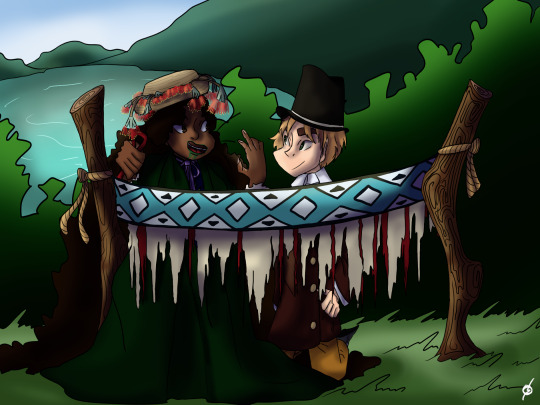
Day One: 10000 BCE - 5000 BCE // Heirlooms @historical-hetalia-week
(Unfortunately, I don't have much for such a long time ago!!)
The heirloom part may not be immediately clear...essentially I was wondering if culture (especially culture and traditions inherited by predecessor civilisations) might be 'heirlooms' to Nations. So, this piece is based on the sharing of cultures and 'creation' of heirlooms. Further explanation below the cut!
My main inspiration for this piece was the book 'Dressed: Fashionable History in Aotearoa [New Zealand] 1840 to 1910' by Claire Regnault. (A book I'd highly recommend, by the way, if you're curious about early colonial NZ history.) While it primarily focuses on the lives of the settlers, especially regarding their fashion, the earlier chapters provide fascinating insights into the interactions between the first settlers and the Māori people pre-dating them.
Pronunciations (there will be a few of these scattered where they are relevant):
Aotearoa- Ow-teh-ah-rowuh (like rower) [aɔˈtɛaɾɔa]
Māori- Mow-ree [ˈmaːɔɾi]
While there were, of course, a variety of reactions (ranging from incredibly racist to surprisingly sympathetic) on the European side, the predominant Māori reaction is what most drew my interest. Presumably because British settlers assumed themselves to be entirely superior to the natives of Aotearoa, they would look condescendingly onto the Māori people and their practices- but the Māori people largely did not hold the same view. As such, Māori who traded with the early Europeans were entirely willing to incorporate aspects of European culture and tradition into their own existing norms.
(**Fair warning for some quotes of racist thinking: Hilariously, to the modern eye, in one European attempt to 'civilise' the Māori women and to instil "moral and industrious Habits" (to quote the Reverend Samuel Marsden), Marianne Williams (née Coldham, 1793-1879) began to teach Māori women how to sew, dress themselves, and generally behave in the European way, horrified by their 'lack of womanliness'. Her sister-in-law would join her three years later. At the time, the Church Missionary Society, who were largely in charge of their endeavour, far preferred married couples to join them in 'educating' the natives, for they feared that single men were "likely to fall into the traps which are continually put in his road by native females". And while men were certainly not involved in the teaching of sewing to Māori women, Marianne and her sister-in-law were not without their own... struggles in this aspect. To quote Marianne: "The tall muscular forms of the Newzealanders flitted before my mind's eye whenever I endeavoured to sleep." I had to laugh when I read that. Oh, the irony. **)
**I'd like to quickly note who, exactly, I'm portraying in my piece. This will better contextualise my illustration. On the right is England (as might be obvious), though the left is a bit more complicated. I personally do not agree with the canon depiction of New Zealand in Hetalia (which, of course, is my own perspective, and I welcome other opinions as well), and so I've created my own oc NZ character. However, she is not in this image. In creating her I had to wonder about her origins- and where she stands considering the great racial divide in her country. My perspective is that, prior to European arrival, there was a representative of the Māori culture as opposed to individual iwi. The colony of New Zealand (and later the country) is both her younger sister and the younger sister of England, stuck in the middle. On the left in this image is the Māori representative (who likely goes by Aotearoa in modern time, at least as one among many names, but who at this point I can only see her calling herself Tangata Whenua)- there will be more explanation on her to convey why all of this is as it is in my mind.
Tangata whenua- Tah-nga-ta fen-oo-a [ˈtaŋata ˈfɛnʉ.a]
In particular (and as is depicted here) the Māori people became enamoured with blankets. This is likely because they could be wrapped around the shoulders and look remarkably like kākahu (picture below) cloaks, which were a way to show social status in Māori culture. Eventually, the Māori traders became so proficient at judging the quality of the blankets Europeans would trade to them, that they were far better judges than the European traders attempting to sell them.
Kākahu- kaah-ka-hoo (couldn't find an IPA for this)
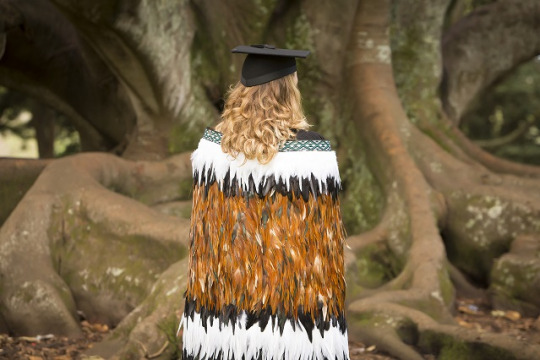
(Taken from Academic Dress Hire. Kākahu is the general word used to refer to Māori cloaks, though there are many individual types with their own names. This depicts one type.)
Another key point of interest is how Māori incorportated European sewing, etc techniques into their own garment creation. Red (whero- pronounced ferroh or ferraw) is a very important colour in Māori tradition, representing high status. Your historic Gucci watch, if you will. So Māori traders were likely ecstatic to see red wool among the many goods offered to them by European traders- both for its presumed price and abundance, and the prior context. This can be seen through kākahu cloaks produced following European contact, many of which incorporated red wool. Below are two examples (both taken from Dressed- apologies for any issues):

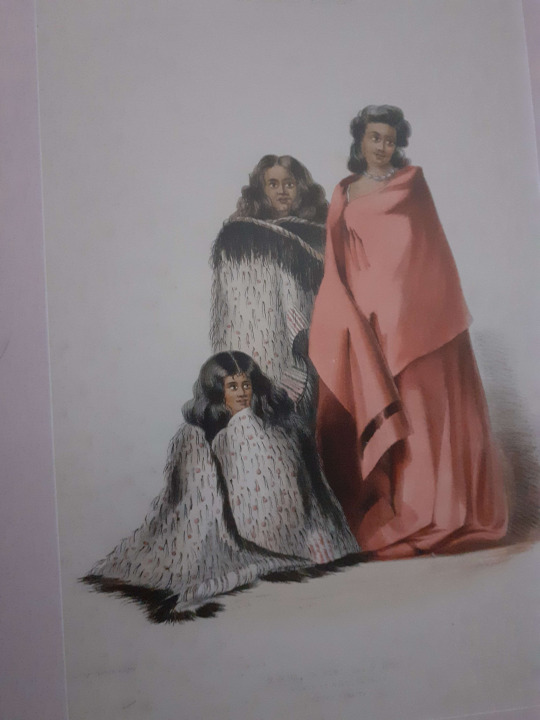
(Second image originally from George French Angus' book 'The New Zealanders Illustrated', published 1847)
This mixture of techniques is something I have attempted to depict in this illustration- however I am no expert in kākahu creation, and am not here to pretend that I didn't get something (or multiple things) quite wrong in that aspect. I'm no expert!
This illustration is set vaguely around the 1840s - 50s, though leaning more towards the early 40s. Arthur's outfit is mainly inspired by the following two illustrations from Panorama's 'A History of Fashion: From Loinclothes to Lycra' by Jacqueline Morely, David Salariya, etc, which date to 1828 and 1847 respectively, so take that how you will.
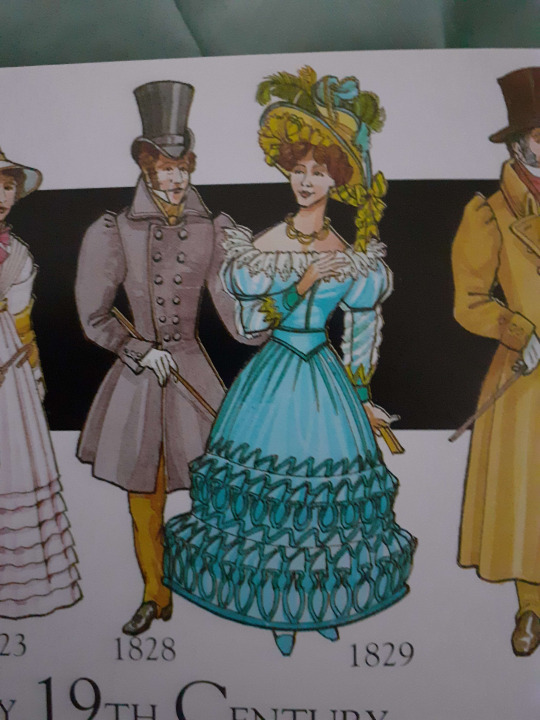
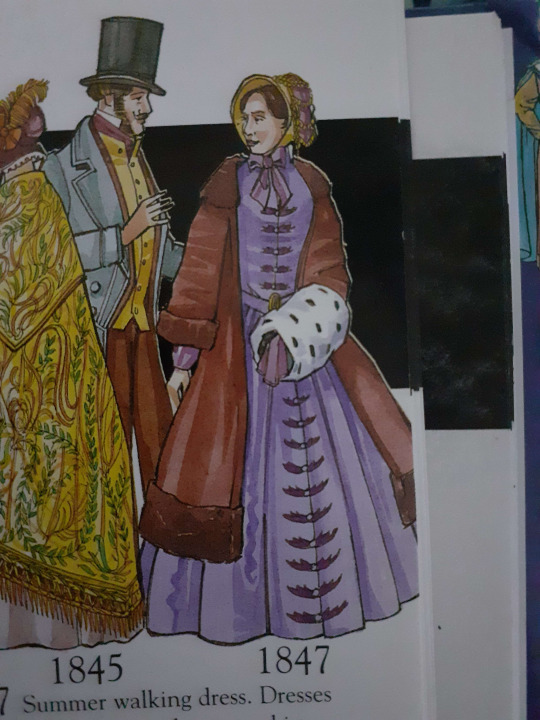
In the illustration, Tangata Whenua and England appear to be working together to construct this kākahu which combines both of their cultural practices into one garment. However, upon further observation, inequalities in this exchange of culture can be observed. For example, Tangata Whenua is entirely clothed in European garments. While she wears the blanket as a cloak substitute (making it a distinctly Māori appropriation), and undoubtedly hasn't bothered herself with the layering of undergarments, etc under her dress, and her hat depicts pohutukawa (paw-hoo-too-kawa) flowers as an added accessory, the point stands that she's made an effort. England, meanwhile, dresses himself in only the European style. Tangata Whenua is the one explaining the process to him and grasping the weaving. While he is curious, it is implied that he's done none of the work. This is meant to draw comparison to relations between Māori and Europeans at this time and onwards. The Māori held respect towards the European way of life, and tried to meet it on equal grounds. Europeans looked condescendingly down onto the Māori way of life, and, while initially intrigued, over time and with more concentrated governance, this would be forgotten, and te Ao (teh ow) Māori would be steamrolled over. For now, Māori remain friendly- but as the wrongs begin to add up, this will change.
(Let's just say New Zealand's early years will be spend embroiled in civil war.)
If you've just read this far for explanation of the post, you've reached your conclusion. From here, I'm gonna talk about my oc and the inspirations behind her :)
Tangata Whenua draws inspiration from two Māori women depicted in Dressed- one in personality, one just had a stunning hat. I've not quite figured out a human name for her yet, but I'm fond of the given name Māra (Maahra). However, Māori traditionally changed their names often, and so this is likely only one of the many names she is known by. Mara (without the ā- pronounced exactly as it looks) is both a term of address to someone close to you in the north, and a word meaning piece/scrap/rag. Māra can mean a garden/cultivation, and related to Māra Tautāne (toe-taahne)- a ceremonial garden where the plants grown within are offered to Rongo (rawngaw) (god of cultivated plants). I feel she got this name when someone (aware or unaware of her nature) addressed her by mara, and she realised its second meaning, as well as its connections to gardens (which I can see as a metaphor for societies, etc, and their growth/cultivation) and thought it quite fitting.
As for her hat, that is inspired by this painting, also by George Angas:
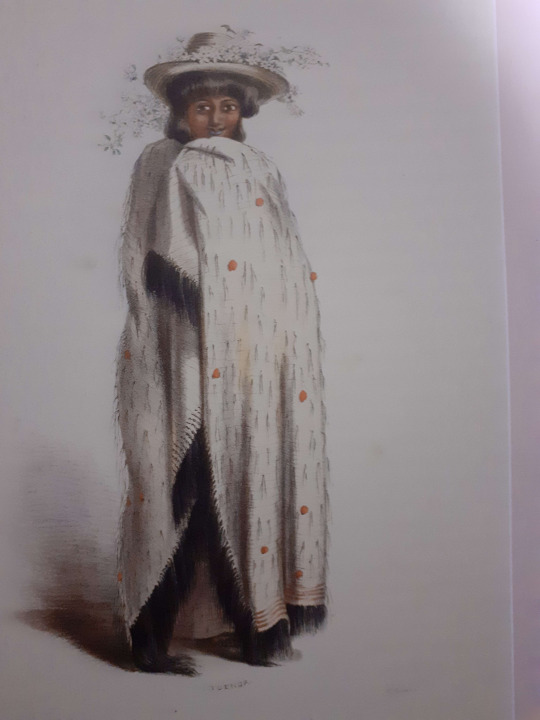
This depicts Toenga (taw-enga) of Ngāti Maru (ngaah-tee Maroo) in a quite fashionable hat. I quite like it, and adapted it (though replaced its flowers with pohutukawas) for Tangata Whenua. I also enjoy the energy Toenga appears to give off- it feels very suitable for Tangata Whenua's personality. However, her primary personality influence is...
Rangi Topeora (Rangi Taw-peh-awhra) of Ngāti Toa (taw-uh) and Ngāti Raukawa (roe-kawa) was a female chief of Ngāti Toa (or so my research seems to imply- sources are frustratingly vague on this) and composer. While there is little information on her- I can find nothing on her birth date, and the range given for death dates is nearly a decade wide- what there is sparks much joy. In Dressed, her relationship with European trader Mayhew (one of many she took) is the main focus where she is mentioned. She admits to being a woman "notorious for following her 'hearts desires'", and I believe that if I had to summarise Tangata Whenua into one short phrase, this is what I would use. Māra is a woman of emotion and desire- that is what motivates her above all else. Another move of hers that I adore is, upon her baptism, Rangi would accept no name except 'te Kuini' (teh koo-ee-nee), which translates to 'the Queen'. She would also at some point adopt the name Wikitōria (wee-kee-taaw-ree-ah), which is the Māori equivalent of Victoria, and one of her husbands was given the name Arapeta (as it looks), which means Albert. She became commonly known as 'the Queen of the South'. Here's a portrait of her from circa 1863, painted by Gottfried Lidauer:
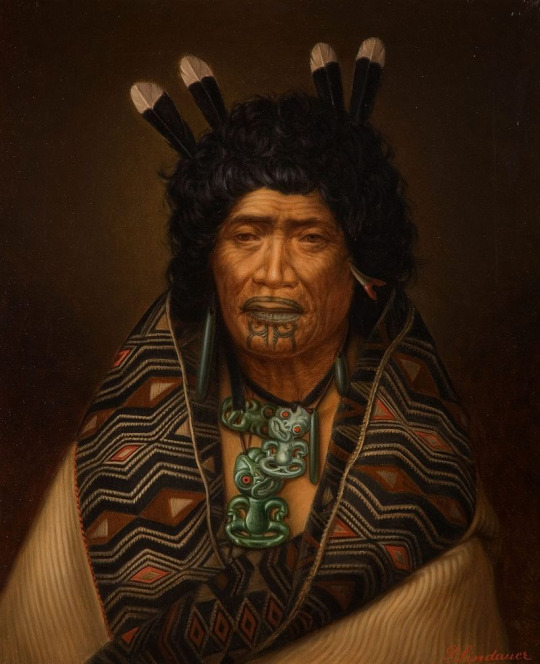
In regards to other notable points of Tangata Whenua visible in this illustration:
I debated with myself over and over again about what I should do regarding her moko kauae (mawkaw k-oh-ay)- the tattoo on her chin, lower lip, and around her upper lip. These are incredibly personal to each individual, and I am no expert in them. Anything I give her will be incorrect, but not giving her anything even more so. Eventually, I settled on referencing a historic tā moko (taah mawkaw- the general name for traditional Māori tattoos)- one which is depicted small and vague enough that surely nothing I interpret from it can be exactly accurate to the original. In that sense, at least, I am hopefully not stealing anyone's identity. If someone happens across this who is more knowledgeable in tā moko than I, I would welcome your opinion on this matter. My intention is absolutely not to appropriate something so personal, but I find myself conflicted on what action to take in this situation. Here is Rakapa Ngawai (rakapa nga-why) with her sons Eru and William, whose moko kauae I have referenced:
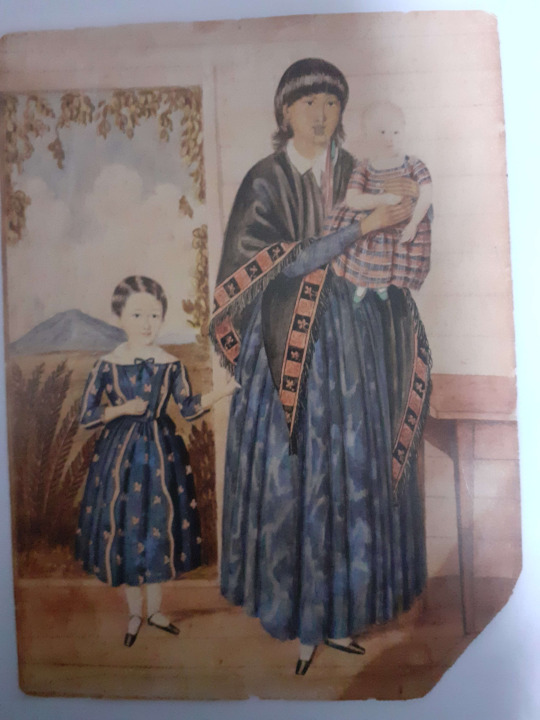
This illustration was made by Joseph Merrett in 1852.
Finally, though it is practically impossible to spot unless you zoom in REAAALLLLY close... I shall mention Tangata Whenua's necklace. It is made of pounamu (poe-nah-moo)- a type of jade only present in New Zealand's South Island, on the west coast. Tradtionally, necklaces (and other jewellery, though necklaces are most commonly known) made of carved pounamu were family heirlooms passed down from generation to generation. They come in a variety of general shapes, each with their own symbolism. For Māra, I've decided on a Hei Matau (hey mah-toe) (fish hook) shaped pounamu necklace. It is said to grant good luck, strength, and safe travel. It also draws from the traditional tale that New Zealand's North Island was a huge fish raised from the ocean when Māui (yes, just like in Moana) caught it on his fish hook- which is said to be made from his grandmother's jawbone. The ocean, in addition, is deeply important in both Māori and pākehā (paah-keh-haah- a word initially intended to denote European New Zealanders by Māori, but which can generally refer to non-Māori New Zealanders) cultural traditions. As such, fish hooks were quite important back in the day, to the point that people would always keep one on their being. Upon European contact, this constant wearing of fish hooks was taken as a sort of ornament- and gradually it evolved to be such. I imagine Tangata Whenua has only gotten her pounamu Hei Matau in recent years upon this illustration, replacing her fish hook tool. When New Zealand reaches adulthood, Tangata Whenua will pass this necklace down to her.
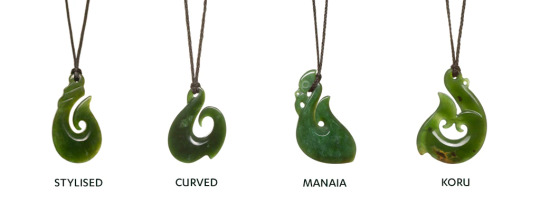
Here are some different styles of pounamu Hei Matau- the latter two incorportating two other styles as well. Tangata Whenua's necklace is most similar to the curved design, though they're not identical.
So that's my long ass explanation finished! If you read this far, reblog/comment with a cookie so I can be surprised people listen to me speak!!
Edit: I forgot to talk about Tangata Whenua's inordinately long hair!!! Here's the gist (from Day 3's post):
In Māori culture, the head (and thus hair) is considered very tapu (sacred). Long hair often indicates high status. In fact, in traditional Māori culture, one's hair may only be attended to by one of more mana (generally refers to reputation/status/legacy- doesn't have a close English concept unfortunately, but for now think of it like rank or status). As the personification of the Māori culture, Tangata Whenua was probably viewed as quite an important atua (god, sometimes translated as spirit), meaning no mortal could have more mana than her. As a result, unless any other atua decide to stop by for a chat, there is no one who can style her hair, or cut it. (I imagine she still brushed it, at least because unkempt hair was a sign of mourning.)
Apologies for any confusion that may have caused!!
#hws new zealand#hws england#hhw day 1#prompt: heirlooms#period typical racism cw#long ass rambles#historical hetalia#hetalia fanart
9 notes
·
View notes
Text
Finding out it’s not the art field and whites in nonprofits are also crazy, invasive, and jealous really makes me trust no one.
#I just….I hate them I really do#I worked remotely and they worked in a New England State#Yano I thought y’all always claimed it was the south that only had racism but oh well
1 note
·
View note
Text
In 2016, I was dating a black boy whose mom didn't speak English. When we were on a date and in line for something, he stepped away to take a phone call from her and started speaking Mimi (their native language).
An older white woman came up to me, glanced at him nervously, and said, "do you need help? I can call the cops."
I, a teenage white girl, got offended and quite harshly said, "no, that's my boyfriend." I probably would have said worse but he came up to us and squeezed my hand.
I asked him why he stopped me and he said, "I am the one who would have to face the consequences."
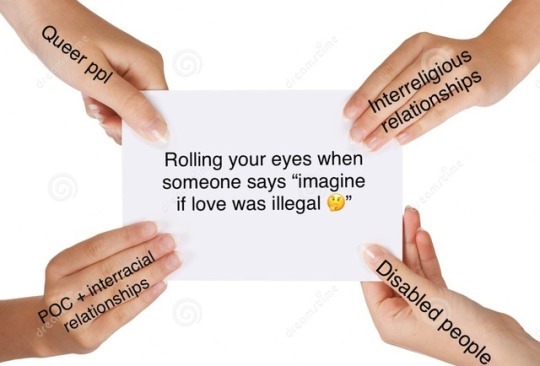
#new england ain't magic land with no racism#interracial realtionships get looked at a lot more than people recognize
170K notes
·
View notes
Text
1 note
·
View note
Text
#slavery#slave#yale university#yale#race#racism#india#indian#university#history#slave trade#united states#diversity#british#england#madras#colonialism#british colonialism#colonial history#colonial america#decolonisation#decolonization#elihu yale#biography#historical#east india company#education#woke#news#abolitionist
1 note
·
View note
Text
Another Story (The Stories of John Cheever)
Italian Prince comes to America. Has a bad time
This is a weird one. Mostly it's making me think of stereotypes because everything that Marcantonio Parlapiano (what the hell is with that last name? Parlor Piano? Also the first name is two names - Mark Antonio - Mark Antony?) does is an Italian stereotype, but why are Italian stereotypes so different than Italian American stereotypes. Italian American stereotypes are gangers, tough guys, distinguished gentlemen who are very polite until you don't give them what you want and then there's a horse head in your bed.
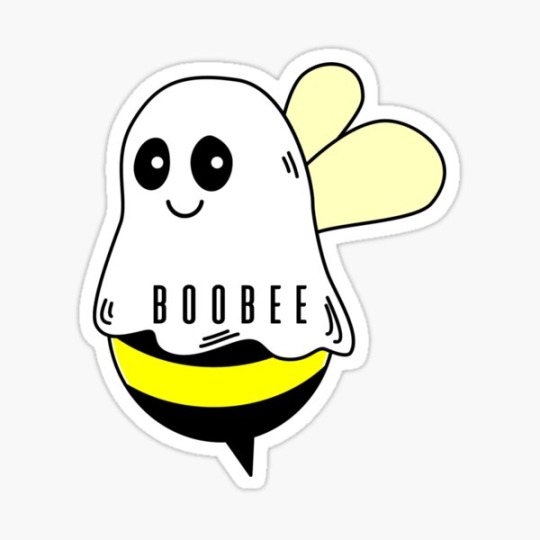
Italians have weird stereotypes. Despite Mussolini and Machiavelli and Garibaldi, Americans typically think of Robert Beningi as the stereotype. The goofy heavily accented guy who just is whacky all the time. Even in Fellini movies, there's a bit of a wild horny element going on. I guess "talking with one's hands" is there, but frankly, it's just interesting that Italian Americans have managed to create a scary stereotype while Italians are stereotypical goofballs (and then we can also talk about how Jews and Italians look alike to the point that when an Italian seems nebbish or goofy, he plays Jewish characters and when a Jew can seem tough and nasty, he plays Italians.)
And if I start talking about Nicholas Cage, we could be here all night.

Suffice it to say that Mark Anthony Player Piano, aka Boobee, is the harmless Italian stereotype. Cheever wrote this one in 1967 and it's all about the cultural divide. Poor Boobee (yes, he prefers to be called Boobee) can't speak English that well, keeps getting shit from people, marries a woman whose family hates Italians (and Jews!) and then confides in the narrator who is a New England blueblood schmuck who can't deal with "emotions".
So the narrator is telling the story of Boobee and it's one of those in-and-out relationships where the narrator keeps tacitly comparing himself to Boobee. Boobee can't deal with his wife wanting a career in music. Boobee can't deal with his wife trying to do something. Boobee won't stop talking about it to the narrator. The narrator hates this honesty.

Poor Boobee. Finally Boobee just goes home. The wife gives a concert and it's terrible according to most accounts. But since Boobee never respected her in the first place, it doesn't really matter, now does it?
And then we get this anecdote at the end where a guy tells the narrator a story about how his wife worked at Newark airport and how she kept taking her work home with her. Like she sounded so official when she told him to come to dinner or come to bed.

So how the fuck are these stories related? I mean, did John Cheever just not know how to end the story? So he felt like it was a wet fart of an ending and had to include this other sad husband?
Or maybe it's all about how marriage is hard, especially if you are man who doesn't even want your wife working in the first place? Or maybe it's just that there is a foolishness when it comes to women happening here. This is the 1960s.

But honestly it's a weird sad story about weird sad people who don't understand each other and can't really get over patriarchy. Boobee expects his wife to be ok with being a wife. The other guy expects his wife to at least stop with the work and maybe that's also about how he resents the fact that she's working. The narrator doesn't really care much for his wife. Everyone is drunk.
Buy cigarettes!

#John Cheever#1967#drunks#italians#italian stereotypes#robert benigni#life is beautiful#tony soprano#italian american stereotypes#racism#ethnocentrism#jews#suburban America#new england#Tim Lieder#unhappy marraiges#divorce#singing#failed ambition
0 notes
Text
“Of course, nothing like that every happened here,” said Dad, gesturing loosely toward the window and the six states of New England. “I never saw segregation.”
“What do you mean?” said Macey, almost tempted to laugh. “We're totally segregated. The firemen at Good Shepherd were stunned to see Aus and me and Lindsay and Grace. Nobody white lives there. Just like nobody black lives here.”
“Nonsense, Macey,” said her mother, who had been paying attention after all. “It was in the paper just the other day that our town is twelve percent minority.”
“Mom,” said Macey, exasperated. “That's including the Japanese kids whose fathers run conglomerates in New York, the kids from India whose fathers are at the United Nations, and all the babies from South America that yuppies adopted.”
“They count,” said her mother.
“I'm talking about people like Mr. Sibley or Venita. Ordinary black people who buy a house and stay.”
“No,” said her mother slowly. She looked tired, and Macey felt guilty about working her over. “You're right, Mace. We're as segregated as the South ever was. We're just sly about it.”
— Burning Up (Caroline B. Cooney)
1 note
·
View note
Text
Tw hate crime, racism, islamaphobia.
A group of white islamaphobic men in Walsall attacked a Muslim family at around 7pm on the 28th May 2023.
What was this Muslim family doing to warrant being beaten by this islamaphobes?
...Having a picnic in a park.
Doe Bank Park in Pheasey, Walsall to be precise.
Two members suffered head and facial injuries.
The woman in the family was reportedly on crutches holding a child that was pushed out of her arms.
These men were armed.
Reports of them screaming and swearing at the family calling them "dirty muslims" and "this is our country. We're here to damage you and send you back to your own country."
This was not an accident.
This is a hate crime.
#islamaphobia#walsall#England#uk news#Muslim#Muslims#Hate crime#Britain#Uk#united kingdom#Islamaphobic#Racism
1 note
·
View note
Text
So utterly disgusting and awful but we've got some light in this darkness.
July 30, 2024 - A drunken racist scumbag gets bricked in the head and the balls during a fascist riot in Southport, UK. [video]
#video#also shoutout to the swifties for raising over 100k for the local community#prev tags#Reblogging with context#uk news#england#south park#riot#fascisim#racism#taylor swift#solidarity
8K notes
·
View notes